Waymo's robotaxis are better than some San Francisco drivers
Waymo's autonomous robotaxis were made available to the public in San Francisco last week.
I made two trips across the city during peak hours.
Aside from a few minor hesitations, Waymo's autonomous driver offered a smooth rider experience.
Waymo, Alphabet's autonomous taxi cab company, is now available to the public in San Francisco — a culmination of more than a decade of testing and wading through regulatory hoops.
About 300 cars are operating in the city. The company has about 700 robotaxis in total — most in SF and Phoenix — but Waymo's spokesperson told Business Insider there are plans to expand access to the public in Los Angeles and Austin.
I took two rides on June 27 to and from the Financial District of SF during peak morning commute hours.
My verdict? Waymo's autonomous driver is pretty damn smart, and aside from a few hesitations, the robotaxi offers a smooth, comfortable experience with competitive pricing against other ride-hailing apps.
Here's how the rides went:
Hailing a ride
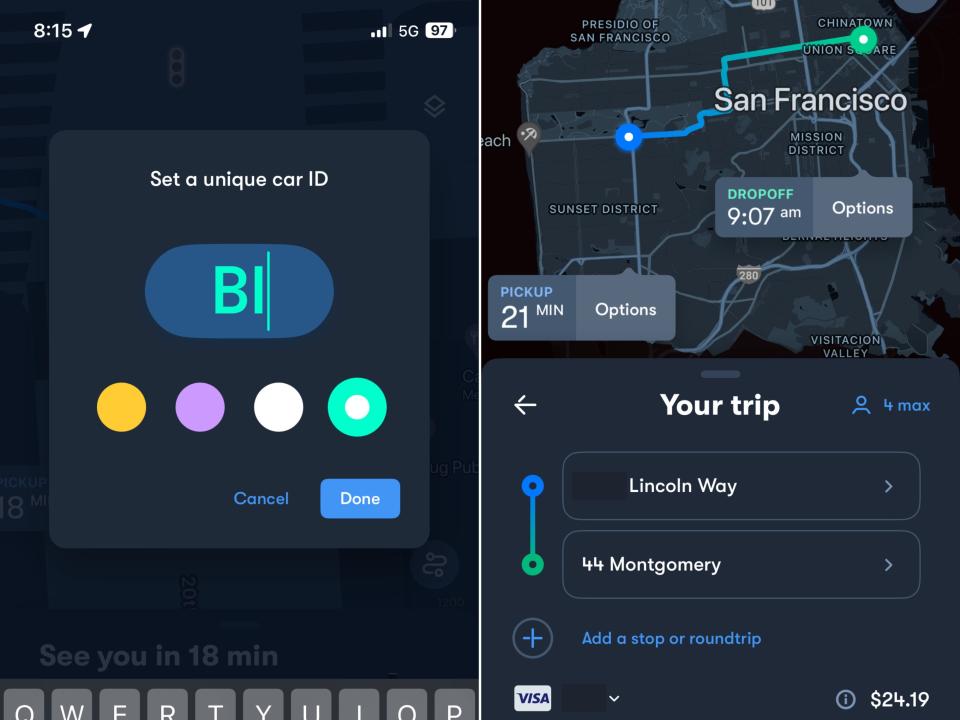
The user experience of Waymo's app is straightforward and similar to that of other ride-hailing apps: You pick a destination and adjust the pick-up location as needed.
For now, Waymo's robotaxi fleet is limited to the all-electric Jaguar I-PACE SUVs, which have a maximum of four seats. There are no other options.
A Waymo spokesperson told BI that the company plans to add the Geely Zeekr, an all-electric van, to its fleet when it rolls out the 6th-generation autonomous driver software. The van will have five seats.
A neat feature of Waymo's cars is that riders can set a unique vehicle ID or initial that appears on top of the car. This will make your ride more easily identifiable, especially since all of Waymo's cars look the same for now.
Pricing
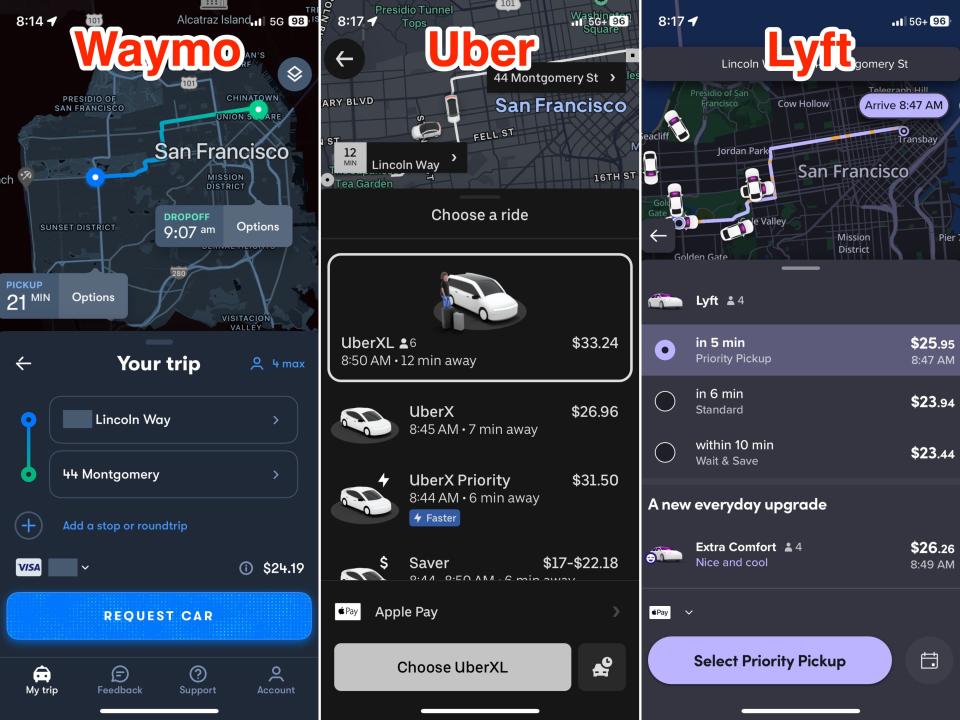
Prices will always vary, but on that Thursday morning, Waymo's prices were competitive with Uber and Lyft, which took me a bit by surprise.
A nearly six-mile trip across SF was $24.19 with Waymo. An UberX for the same trip was $26.96, and a Lyft with standard pickup time was $23.94.
A few things to consider, however. With Waymo, riders know what vehicle experience they're going to get. For now, the Jaguars are clean and have comfortable leather seating. With Uber and Lyft, the vehicles can be a toss-up unless you pay extra for a higher-quality experience.
Uber offers an all-electric car option, while Lyft offers "extra comfort" vehicles that are supposed to be "roomier & quiet." Waymo's cars already cover both options.
Plus, Waymo riders don't have to tip a driver because there isn't one.
A Waymo spokesperson told me that the company continues to evaluate its pricing structure but anticipates staying competitive over time.
Spokespeople for Uber and Lyft noted to BI how autonomous vehicles will be integrated into the companies' existing network of ride-share drivers.
"A lot has happened in the autonomous landscape over the past two years, but one thing remains clear: Autonomous vehicles will be a part of the mobility fabric of the future," Andrew Macdonald, Uber's senior vice president of mobility, said at February's investor meeting. "Our strategy is to be the platform partner of choice for AV tech. Rather than building AVs ourselves, we are bringing developers' fleets onto our network."
Pick up
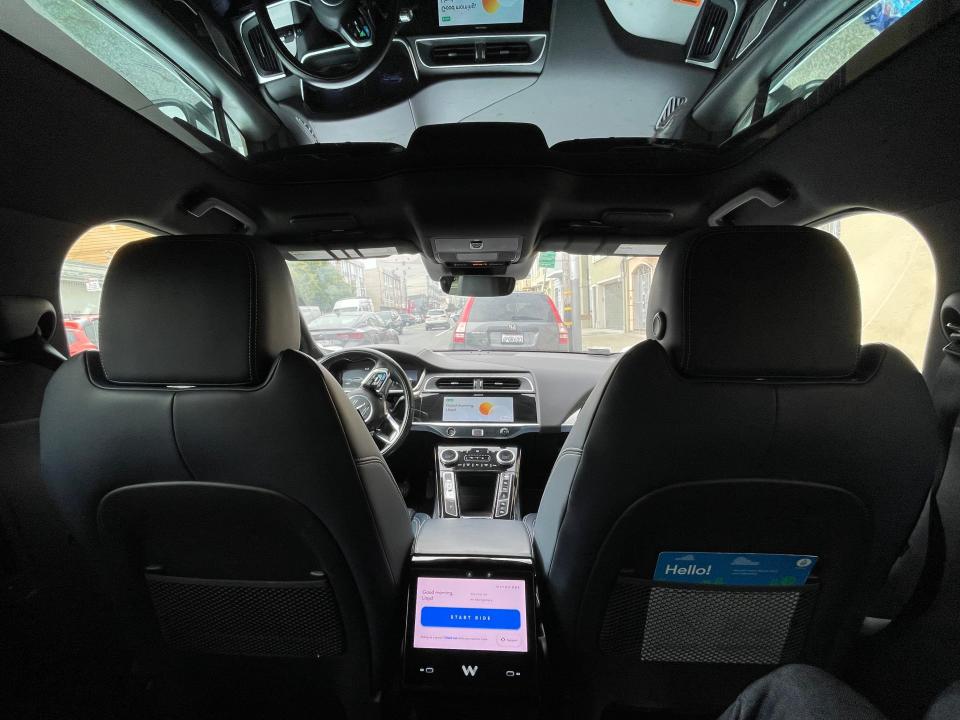
Waymo's car took about 21 minutes to arrive and pick me up that morning.
But pick-up times will vary, as my second ride showed. That time, the car arrived in less than two minutes. Riders should plan accordingly.
I stood near busy streets for both rides to see where Waymo would pull over.
Both times, Waymo found a safe place to stop and avoided double parking the car. However, this may mean walking a block or two away from the original pick-up location.
After I unlocked the car through the app, stepping inside was a jarring experience, as I quickly noticed that there was no driver.
But Waymo appeared to try its best to soothe the riders: The vehicle was automatically playing ambient neo-classical music, and the climate was set at a precise 69 degrees Fahrenheit. It's as if the car was telling me, "Relax, and welcome to the future."
All of this can be adjusted to a rider's preference, which is a plus. A little Sexyy Red during the morning commute, anyone?
Instructions are played once you press "Start Ride" on the touchscreen located at the center console, telling riders to buckle up and not to touch the steering wheel at any time.
The auto message also indicated that there was a camera inside the car. The message added that the vehicle has a microphone that only operates when passengers need to connect with rider support.
Driving in SF
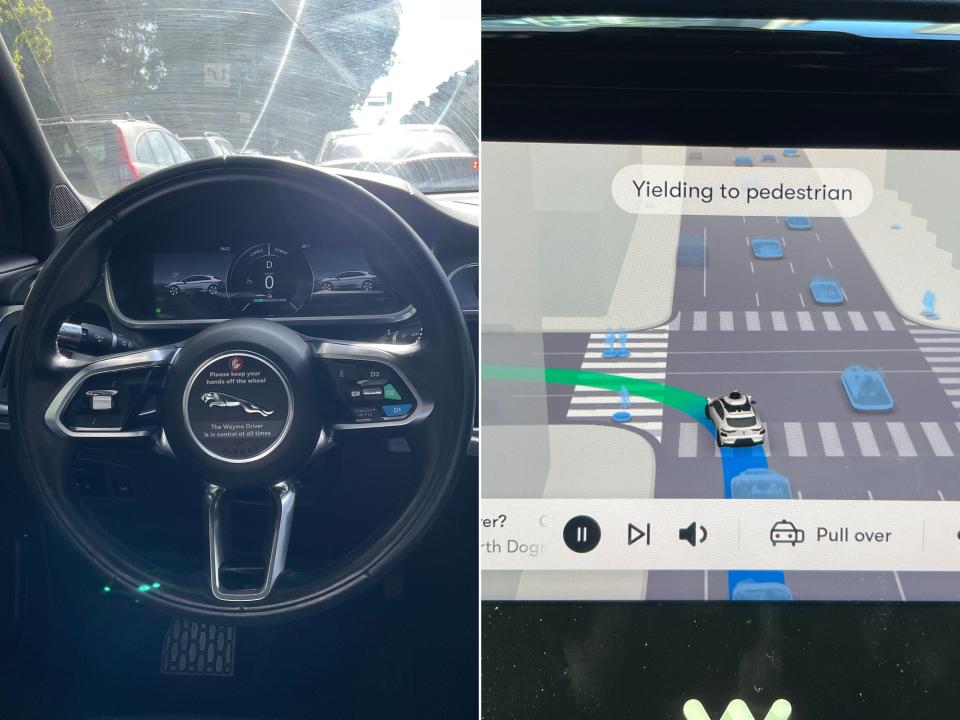
Waymo's 5th generation autonomous driver could be best described as a safe but not an annoyingly cautious driver.
It maintained the city's speed limits, caught yellow lights from a reasonable distance without speeding, and could make a succession of lane changes smoothly on busy streets.
What impressed me more, however, was how it handled riskier drivers on the road and maneuvers necessary to execute in SF.
For example, double-parked cars are a common sight in the city. Sometimes, this means drivers will have to briefly move into the lane of opposing traffic to get around a vehicle.
The Waymo driver knew how to do that, recognizing that the car in the opposing traffic lane stopped to give us the right of way.
The Waymo also appeared to detect a person on an e-scooter coming from behind and inched a little to the left of the lane to give room for the scooter rider. It did the same thing to give itself more room when it detected a large parked bucket truck slightly in Waymo's lane.
In one instance, when another driver cut off Waymo, the autonomous driving system handled it with poise since the other driver had plenty of room to go in front of the Waymo.
At yellow lights, the Waymo made good judgment calls about whether it had enough space to catch the light or stop without pressing the brakes hard.
The expectation I had that the Waymo driver would be stiff, as the term "robot taxi" might suggest, was dispelled throughout the rides.
As small as it was, one moment stood out to me the most — almost a "Blade Runner" moment that convinced me that Waymo is getting close to making their autonomous driving system "more human than human."
At the intersection of Grant Avenue and Bush Street — the busy cusp of the Financial District — the Waymo stopped at a red light.
As it dutifully waited, the Waymo car inched up twice ever so slightly, almost like a human driver would to adjust her distance from the crosswalk or anticipate a light that was about to turn green.
"Why did it do that?" I wondered.
Moments of hesitation

Still, the Waymo driver isn't perfect, as BI's Peter Kafka recently noted.
I counted three moments of — let's call them hesitation — during my second ride in a Waymo.
One was when the Waymo made a right turn on a quieter street, changed lanes, and then returned to the other lane for no apparent reason. This is not to say the car swerved. The Waymo still signaled lane changes, but I couldn't immediately see why it chose to do that.
When the vehicle was driving downhill on the road, Waymo braked a few times — not harshly, but still noticeably.
Lastly, once on Pine Street, the Waymo hesitated for about a second to fully complete a lane change to the left. The vehicle appeared to ride a bit too close to the original lane it was coming from.
A Waymo spokesperson told me it's hard to determine what happened in those moments without examining the driver logs. The company continues to work out kinks as it gathers more data and feedback.
The spokesperson said it's also possible I failed to notice something the Waymo car picked up.
Fair enough, I suppose. I only have two decent eyes compared to Waymo's lidar sensors, radar system, and 29 cameras.
Drop off
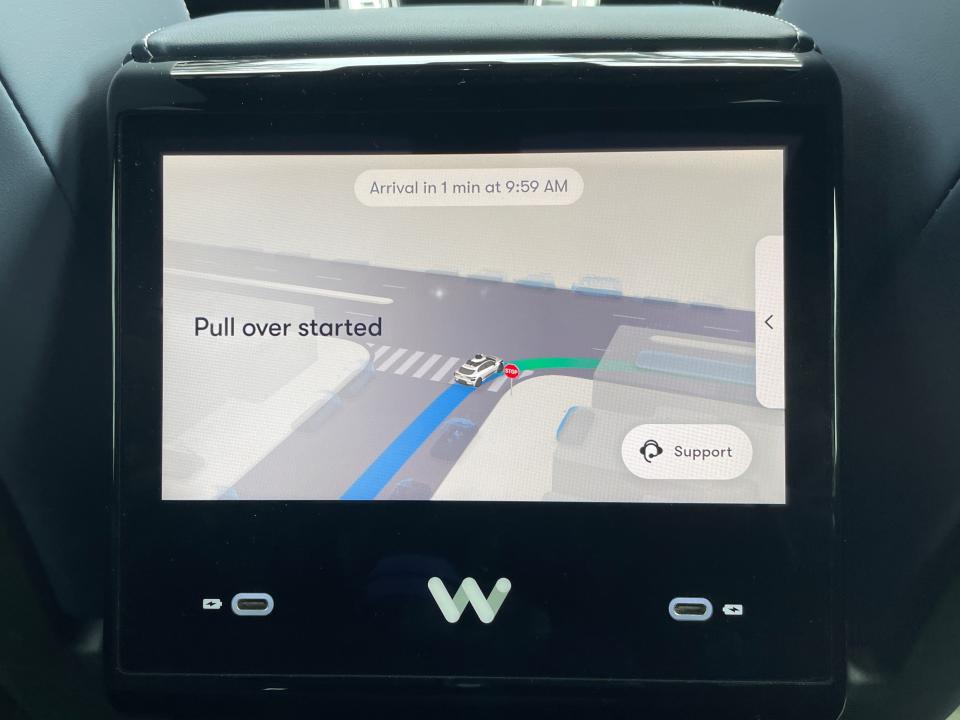
As Waymo approached the drop-off, the system notified me that I was close to my destination and reminded me to take all of my belongings.
One feature I appreciate is the ability to ask Waymo to pull over — like telling an Uber driver, "Right here is good."
By pressing "pull over" on the touchscreen console or your phone, Waymo will find the closest spot to pull over.
Verdict
Waymo makes a convincing case for the autonomous driver.
Even in the hectic streets of San Francisco, where people have to deal with risky drivers and a relatively complex street grid, the Waymo delivered a smooth riding experience.
Plus, the ability to adjust the climate, blast music, and talk in the car would probably be a boon for riders — perhaps more so for introverts. I say this as someone who rolls their eyes at dudes who complain about having to talk to their Uber drivers.
Riders can also bring their service animals without worrying about a driver's discretion. Other pets are not allowed.
Waymo's service could be even more valuable if the company offered more seating. A Waymo spokesperson told BI it is testing the five-seater Zeekr vehicles, but the company has no roll-out date to share.
As I was dropped off from my second ride, a passerby noticed I was taking pictures of the Waymo.
"Cool, right?" he said. "Everything about it, I love 'em."
Read the original article on Business Insider

